
*OEM QUALITY* COOLANT TEMP SENSOR FOR VARIOUS TOYOTA / LEXUS EFI PETROL ENGINES
$59.45
The Engine Coolant Temperature Sensor (CTS or ECT) uses electrical resistance to measure the temperature of the coolant/antifreeze mixture in the cooling system. This gives an indication of how much heat the engine is giving off. The vehicle’s computer will use this information to adjust certain engine functions to keep engine temperature at an ideal level. It may turn the cooling fan off or on, open the exhaust gas recirculation or communicate the need for a richer fuel mixture.
Common causes of Engine Coolant Temperature Sensor failure include:
Symptoms of a failing Engine Coolant Temperature Sensor may include:
Each Coolant Temperature Sensor is environmentally and 100% functional tested to ensure optimum performance and durability out of the box.
What does a Coolant Temperature Sensor do?
The Coolant Temperature sensor changes resistance with the temperature. The Coolant Temperature sensor is critical to many PCM functions such as fuel injection, ignition timing, variable valve timing, and transmission shifting.
Where are these sensors located?
The Coolant Temperature sensor is located in the engine's coolant passage, usually near the thermostat.
Will a malfunctioning Coolant Temp Sensor illuminate the check engine light or affect vehicle operation?
Yes, a failing sensor can illuminate the MIL, and cause the engine to run rich or lean. The transmission may shift incorrectly or not lock up the torque converter.
What are the common causes of failure?
Typically these sensors fail due to corrosion within the coolant system. They may also leak coolant through the wiring connector.
How do we determine if these sensors are malfunctioning?
A DTC will be set if an abnormal reading occurs, P0116 for sensor performance, P0117 for low input, or P0118 for high input. The coolant temperature sensor reading should closely match the air charge/manifold temperature reading on a scan tool if the engine has not run for over an hour. The sensor circuit can be checked for proper voltage using a voltmeter.
Why Buy from Us / What makes Our Coolant Temp Sensors the best?
As an OEM manufacturer, Standard/ Our Supplier has complete control of the manufacturing process from componentry to finished product
Temperature sensor design specifies tight tolerance thermistor response values to assure the accuracy of the temperature measurement and proper part operation
All Coolant Temperature sensors are 100% factory-tested to ensure trouble-free performance.

*OEM QUALITY* COOLANT TEMP SENSOR FOR VARIOUS TOYOTA / LEXUS EFI PETROL ENGINES
$59.45

*OEM QUALITY* COOLANT TEMPERATURE SENSOR FOR FORD FALCON BA BF 5.4L V8 2002-08
$37.77

*OEM QUALITY* Cylinder Head Temp Sensor for Ford FG FALCON 2008-16 6cyl and V8 X
$76.19

Coolant Temp Sensor for HOLDEN 3.8L V6 (L27/L36/L67) 3800 ECOTEC & SUPERCHARGED
$42.97

COOLANT TEMPERATURE SENDER FOR MAZDA BRAVO 1991-2006 B2500 B2600 UF UN 2.5 2.6
$32.18

Coolant Temperature Sensor 2002-2015 Audi A4 B6 B7 B8 8E 8H 8K (1.8 2.0 2.4 3.0
$41.91

COOLANT TEMPERATURE SENSOR FOR FORD RANGER PX EVEREST UA MAZDA BT-50 P4AT P5AT D
$45.48

COOLANT TEMPERATURE SENSOR FOR HYUNDAI IMAX ILOAD TQ G4KG D4CB 2008-ON 2 PIN PLU
$53.51
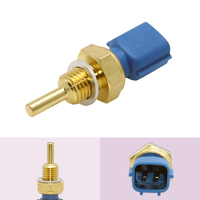
Coolant Temperature Sensor for NISSAN NAVARA D21 D22 D40 1999-15 YD25DDTi VG30 Z
$32.97

Coolant Temperature Sensor for NISSAN PATROL Y61 GU 3.0 4.2 DIESEL TD42 ZD30
$32.97

Coolant Tmperature Guage Sensor for MITSUBISHI PAJERO 3.5L 6G74 NJ NK NL NM NP 1
$32.18

OEM QUALITY 99-08 Subaru Engine Coolant Temperature Sensor Impreza Legacy NEW 22
$62.99

TEMPERATURE SENSOR CHRYSLER 300C LX LE, JEEP GRAND CHEROKEE WH WK, COMMANDER XK
$43.69

TEMPERATURE SENSOR FOR FORD 4.0L (TERRITORY SX SY SZ / EXPLORER UN UP UQ US)
$37.77
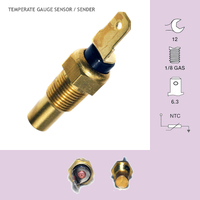
*OEM QUALITY* COOLANT TEMPERATURE SENDER FITS SUBARU IMPREZA LIBERTY OUTBACK 90
$32.18
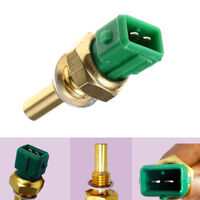
*OEM QUALITY* COOLANT TEMP SENSOR FOR FORD FALCON XE XF ZJ ZK ZL FD FE CAPRI SA
$69.97
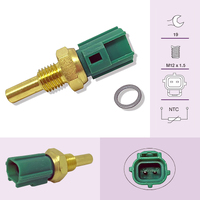
*OEM QUALITY* Coolant Temp Sensor for HIACE 3L 5L 1RZE 2RZ 2RZE Engines (LH RZH
$59.45
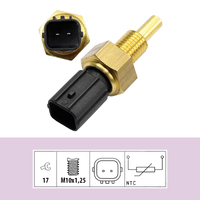
*OEM QUALITY* COOLANT TEMP SENSOR for HONDA ACCORD CM 2003-07 (2.4L K24 3.0L V6
$74.93
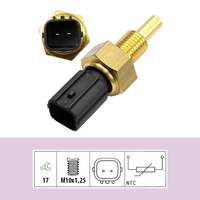
*OEM QUALITY* COOLANT TEMP SENSOR for HONDA ACCORD EURO CL 2.4L 03-08 K24A3
$74.93